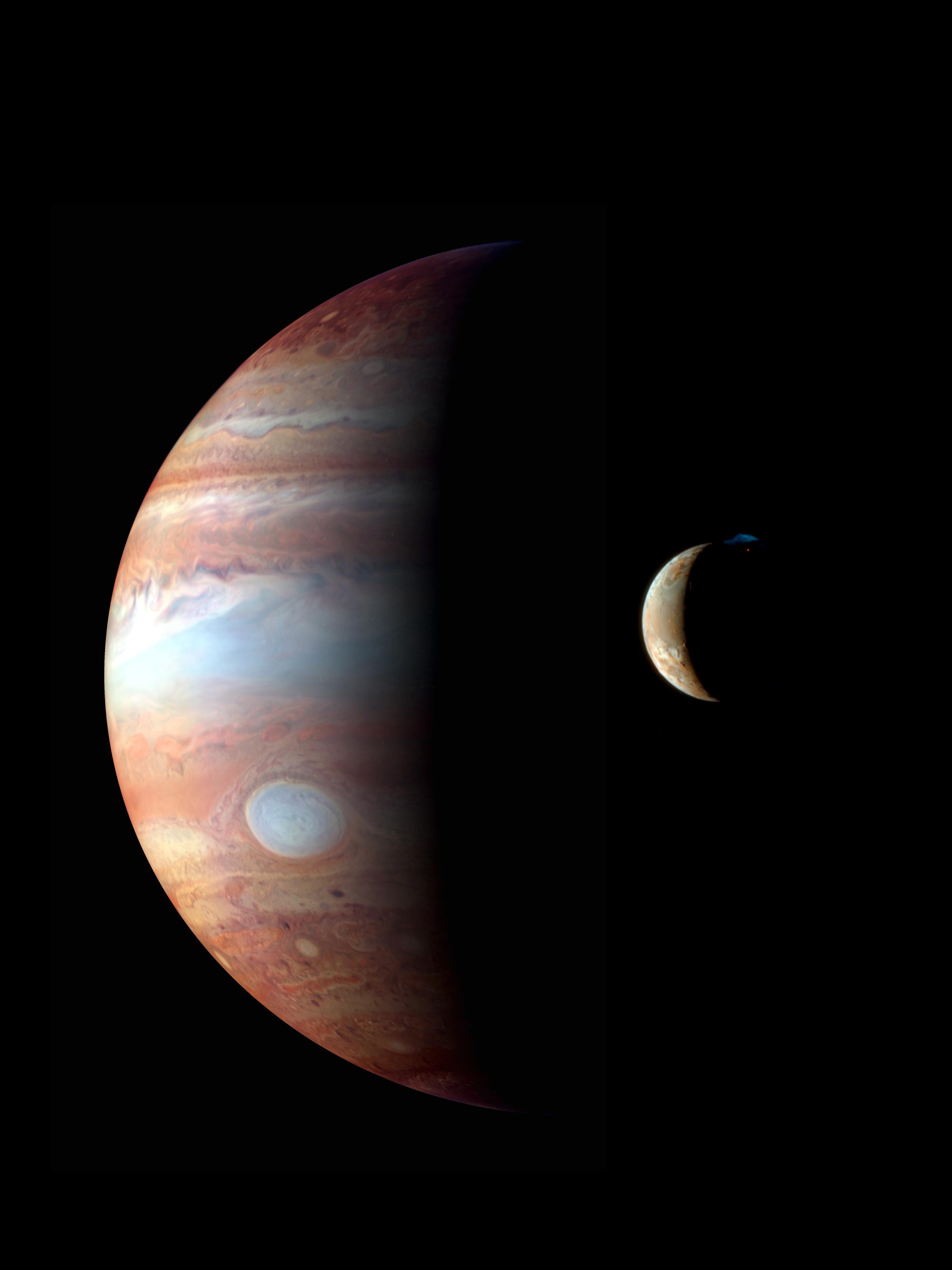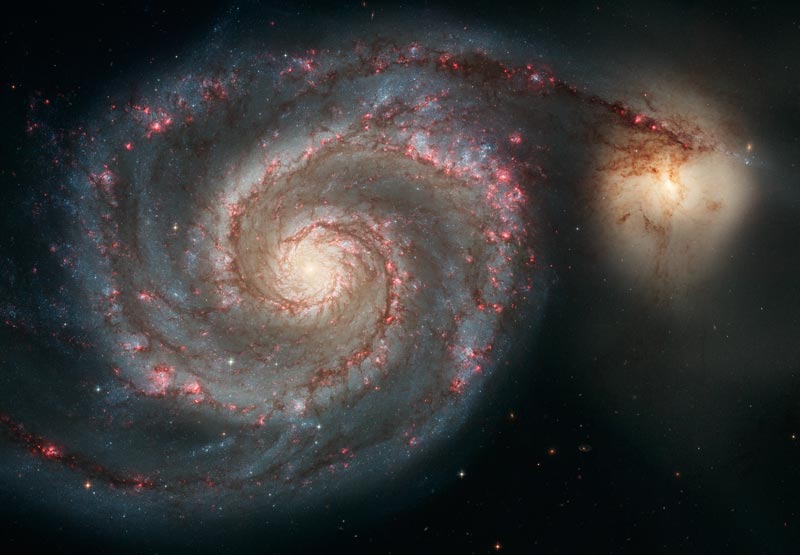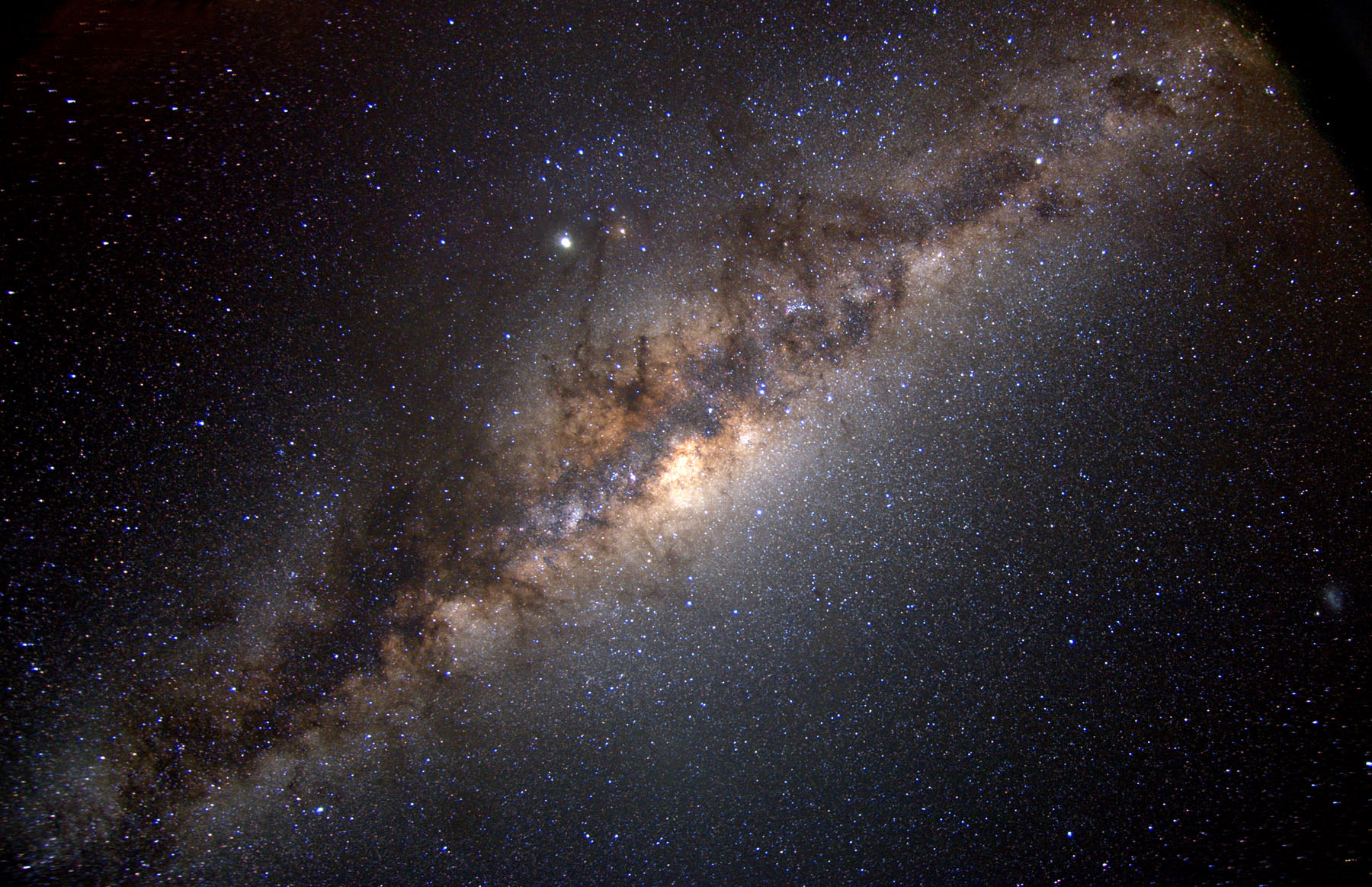
Credit & Copyright: Alain Sallez (picdumidi.org), David Romeuf (Université Lyon 1)
Explanation: This dreamlike view looking south from the historic mountain top Pic du Midi Observatory combines moonlit domes, a winter night sky, and the snowy peaks of the French Pyrenees. Encroaching on the night, lights from the La Mongie ski resort illuminate the mountain slopes nearby while the glow along the distant horizon is from urban areas in southern France and Spain. The night sky features stars of the constellations Orion and Gemini with a bright planet Mars very near the top edge, left of center. The three prominent domes visible (from left to right) house a 0.6 meter telescope reserved for amateur astronomers, a 1 meter telescope that was used to support the Apollo lunar landing missions, and the new, Sun-watching CLIMSO.


















